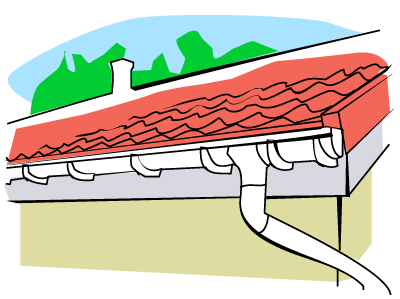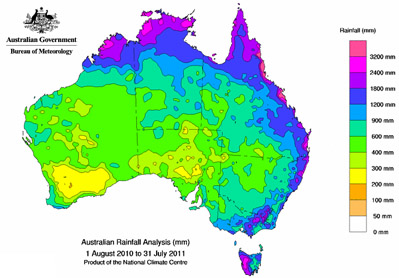
Capturing rainwater
After Antarctica, Australia is the driest continent on Earth, receiving less rainfall per year than any other inhabited continent. Tactics such as damming rivers and creating water storage catchments usually help to maintain a reliable water supply, although it is a supply which may be threatened by long periods of drought. This was seen recently when washing cars and watering gardens with drinking-quality water was restricted across Victoria due to a steady decline in water stores.
The water restrictions encouraged many households to install rainwater tanks to supplement their mains water supply. Water is directed from your roof, into your gutters and downpipes, and then into your storage tank.
What can rainwater be used for?
Rainwater can be put to many uses around your home. Following are some examples of where you might direct collected rain water.
- Toilet flushing
- Laundry
- Bath and shower
- Garden watering
- Car washing
- Swimming pool
Drinking and food preparation
Rainwater that has been captured from your roof may not be safe to drink. It can pick up bacteria, toxins and chemicals from your roof which can prove difficult to filter out. Most evidence suggests that it’s safer to use mains water for drinking and food preparation if you have access to it.
If, however, you need or prefer to drink collected rainwater, you should ensure that it has been filtered and treated to make it safe to drink. Your roof drainage system should be fitted with mesh guards to prevent leaves and other debris from being channeled into your water storage tanks or filtration systems.
Average rainfall different parts of Australia

A first flush diverter will dispose of the first few litres of water to run off your roof, which should eliminate the dirtiest water. Your tank will collect a layer of sludge at the bottom which should be cleaned once or twice a year (follow manufacturers instructions to do this safely). Chlorinating or boiling your tank water will also reduce the bacteria it contains. Never drink water collected from a roof painted in a lead-based paint.
Water restrictions
You dont need an approval to use rainwater in and around your home. You should however, contact your local council before you install your rainwater tank to check if there are any building or planning regulations that must be met.
Relative cost of the tank/equipment vs. savings
Although you may save some money on your water bill, you are not likely to see any great financial return on your water tank. A water tank simply allows you to use water in ways that may otherwise be restricted. Furthermore, using safe drinking water for purposes such as flushing toilets is not sustainable.


